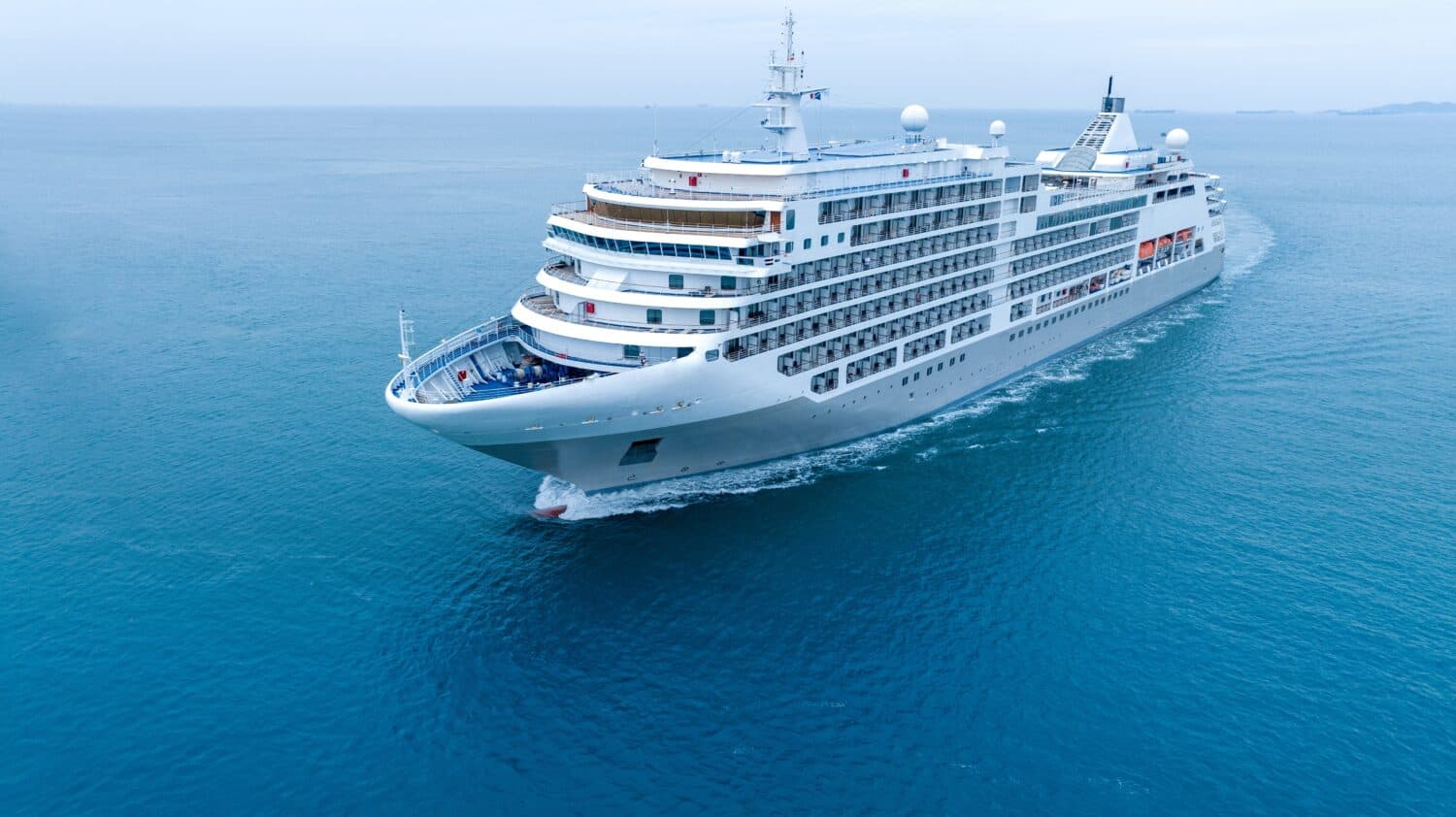
Cruise ship stocks aren’t for the faint of heart. They have a way of making investors queasy, but they’ve also proven to be rewarding at times. Global cruise tourism was worth $7.25 billion as of 2021, and the market is projected to grow by 11% in the six years leading up to 2028. If you’re thinking of adding some of the leading cruise ship stocks to your portfolio, be forewarned that while they make a compelling case, their performance can also be choppy
Ebbs and Flows
Stocks like Carnival Corporation (NYSE: CCL), Norwegian Cruise Line Holdings (NYSE: NCLH) and Royal Caribbean Cruises (NYSE: RCL) miraculously made it through the pandemic, when instead of sailing their ships were out of commission. But they did not come out unscathed. To survive, leading cruise lines had to take on large amounts of debt, which is still lingering on their balance sheets today. While steady bookings lessen the sting, these companies are still navigating their way through the recovery. Investors who are thinking of dipping their toes into the ocean market should do so with their eyes wide open.
Last year was a banner year for cruise companies, owing to pent-up demand spilling over from the pandemic. Their strength caught the markets off guard, particularly in Q2 2023, when Carnival, Royal Caribbean and Norwegian Cruise Lines became the best-performing stocks in the S&P 500 index, stealing some of the spotlight from high-flying technology stocks. But the gains were short-lived, as investors received a reality check when they realized the amount of debt in which these companies were saddled.
In the four years leading up to 2022, debt on the balance sheets of Carnival, Norwegian and Royal Caribbean exploded to $63 billion, increasing the risk that they would default and resulting in junk-bond status in credit circles. However, companies are finding ways to capture more revenue, such as focusing on high-margin items including beverages and excursion activities. As a result, Wall Street believes that if they’re efficient with their earnings, companies like Carnival will be able to turn around and pay down their debts. With few exceptions, their stock prices have yet to reflect that optimism this year.
Carnival Corp Whittles Away at Debt

So far this year, Carnival stock has shaved 16% off its value, a wake up call for investors after shares doubled in 2023. Most recently, the stock has been pressured by a negative report out of Bank of America in which analysts warned of soft itinerary pricing in early June for the cruise line industry. In Q1, Carnival reported higher pricing, so management will likely address this reversal in its Q2 earnings report later this month.
As the world’s biggest cruise line operator, Carnival stock is treading water in 2024. Nevertheless, there are some good things happening, including Q1 revenue that broke the company’s record books at $5.4 billion and persistent booking demand. Carnival has ordered a couple of new ships for the first time in five years, the deliveries for which are expected in 2027 and 2028. Carnival has approximately $32 billion in debt on its balance sheet, which it is whittling away and refinancing at to improve its free cash flow and shareholder value. The company ended Q1 with $1.4 billion in adjusted free cash flow.
Despite its massive debt, Wall Street analysts are largely positive on Carnival Corp’s stock, with over a dozen “buy” ratings and an average price target of $22 attached, reflecting upside potential of over 40%. Patient investors who are in it for the long game might be rewarded as Carnival continues to right its ship.
Royal Caribbean Group: Good Leadership and Cash Positioning

Royal Caribbean stock has fared better than Carnival, advancing 16.5% year-to-date. The company is benefiting from robust demand around cruise bookings, in response to which Citi analysts have labeled the stock their “top pick” in the leisure and travel sector. Royal Caribbean’s management team has a lot to do with the optimism, with Jason Liberty at the helm as president and CEO. As Royal Caribbean’s former finance chief, Liberty has 20 years of cruise industry experience and was named Chairman in early 2024 at a critical time in the company’s history.
Royal Caribbean’s cash position is yet another bright spot, with operating cash flow of $1.3 billion as of Q1. Citi has a “buy” rating on Royal Caribbean stock with a price target of $165, reflecting 11.4% upside potential. With $21 billion in debt, Citi believes Royal Caribbean’s balance sheet is the strongest of the lot, positioning the company to capture the benefits of strong demand.
Norwegian Cruise Line Holdings Toes the Line
Last year, Norwegian Cruise Line shares experienced a 60% increase, 16% of which has been erased year to date. The company reported solid first quarter results, including a 20% revenue increase on robust demand, causing management to lift their full-year guidance. The company is in the midst of an aggressive newbuild program in which it will take eight new vessels across its three brands plus a ship dedicated to its private Bahamas island.
Norwegian Cruise Line has total debt of approximately $13.7 billion and has recently experienced upgrades in its credit ratings. As of Q1, Norwegian boasted liquidity of $2.4 billion, including $559.8 million in cash. The company is servicing its debt including the refinancing of some of it at better terms. Wall Street analysts have mixed views on the stock with an average price target of $20.35 per share, reflecting about 23% upside potential. Norwegian Cruise Line was founded in Norway but its ships travel to destinations around the world.
If you are bullish on the rebound in the ocean market, you might want to consider Norwegian as a long-term bet. More conservative investors might want to wait until the company’s balance sheet is in better condition.
Are You Ahead, or Behind on Retirement?
If you’re one of the over 4 Million Americans set to retire this year, you may want to pay attention. Many people have worked their whole lives preparing to retire without ever knowing the answer to the most important question: am I ahead, or behind on my goals?
Don’t make the same mistake. It’s an easy question to answer. A quick conversation with a financial advisor can help you unpack your savings, spending, and goals for your money. With Zoe Financial’s free matching tool, you can connect with trusted financial advisors in minutes.
Why wait? Click here to get started today!
Thank you for reading! Have some feedback for us?
Contact the 24/7 Wall St. editorial team.





